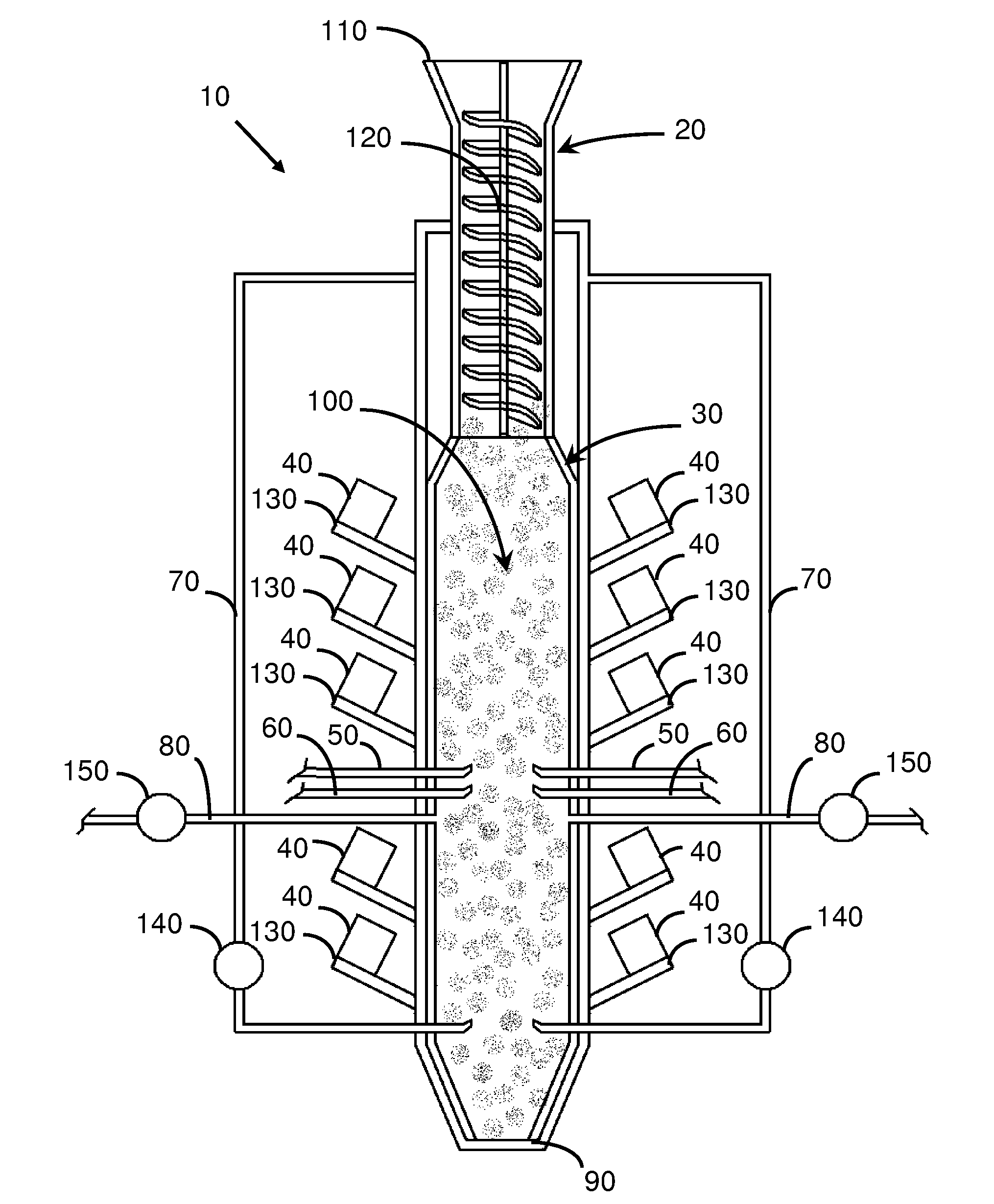Method and apparatus for plasma gasification of carbonic material by means of microwave radiation
a plasma gasification and carbonic material technology, applied in the direction of gasification process details, combustible gas thermal treatment, combustible gas production, etc., can solve the problems of many materials being separated from the incoming waste, the synthesis gas produced is not fully purified, and the total decomposition of carbonic material is not achieved
- Summary
- Abstract
- Description
- Claims
- Application Information
AI Technical Summary
Problems solved by technology
Method used
Image
Examples
Embodiment Construction
[0023]FIG. 1 is a side view of an apparatus to gasify carbonic material according to the present invention. The gasifying apparatus 10 comprises a feeder system 20, a gasification chamber 30, a plurality of microwave generators 40, at least one water vapour feeder 50, at least one oxidizing gas feeder 60, at least one collector of synthesis gas 70, at least one exit of the synthesis gas 80, and an ejector of residuals 90.
[0024]The feeder system 20 provides, in general in a continuous manner, the carbonic material 100 to the gasification chamber 30. The feeder system 20 consists of a hopper 110 through which the carbonic material is introduced, followed by at least one mechanical feeder 120, of a type for example, chain conveyors, screw auger feeder, gravity feeder, or combinations thereof, which allows continuously maintaining full or overfull, without surpassing, the gasification chamber 30 so that it always contains a compact mass of carbonic material 100.
[0025]The carbonic materi...
PUM
| Property | Measurement | Unit |
|---|---|---|
| temperature | aaaaa | aaaaa |
| temperatures | aaaaa | aaaaa |
| temperature | aaaaa | aaaaa |
Abstract
Description
Claims
Application Information
 Login to View More
Login to View More - R&D
- Intellectual Property
- Life Sciences
- Materials
- Tech Scout
- Unparalleled Data Quality
- Higher Quality Content
- 60% Fewer Hallucinations
Browse by: Latest US Patents, China's latest patents, Technical Efficacy Thesaurus, Application Domain, Technology Topic, Popular Technical Reports.
© 2025 PatSnap. All rights reserved.Legal|Privacy policy|Modern Slavery Act Transparency Statement|Sitemap|About US| Contact US: help@patsnap.com


